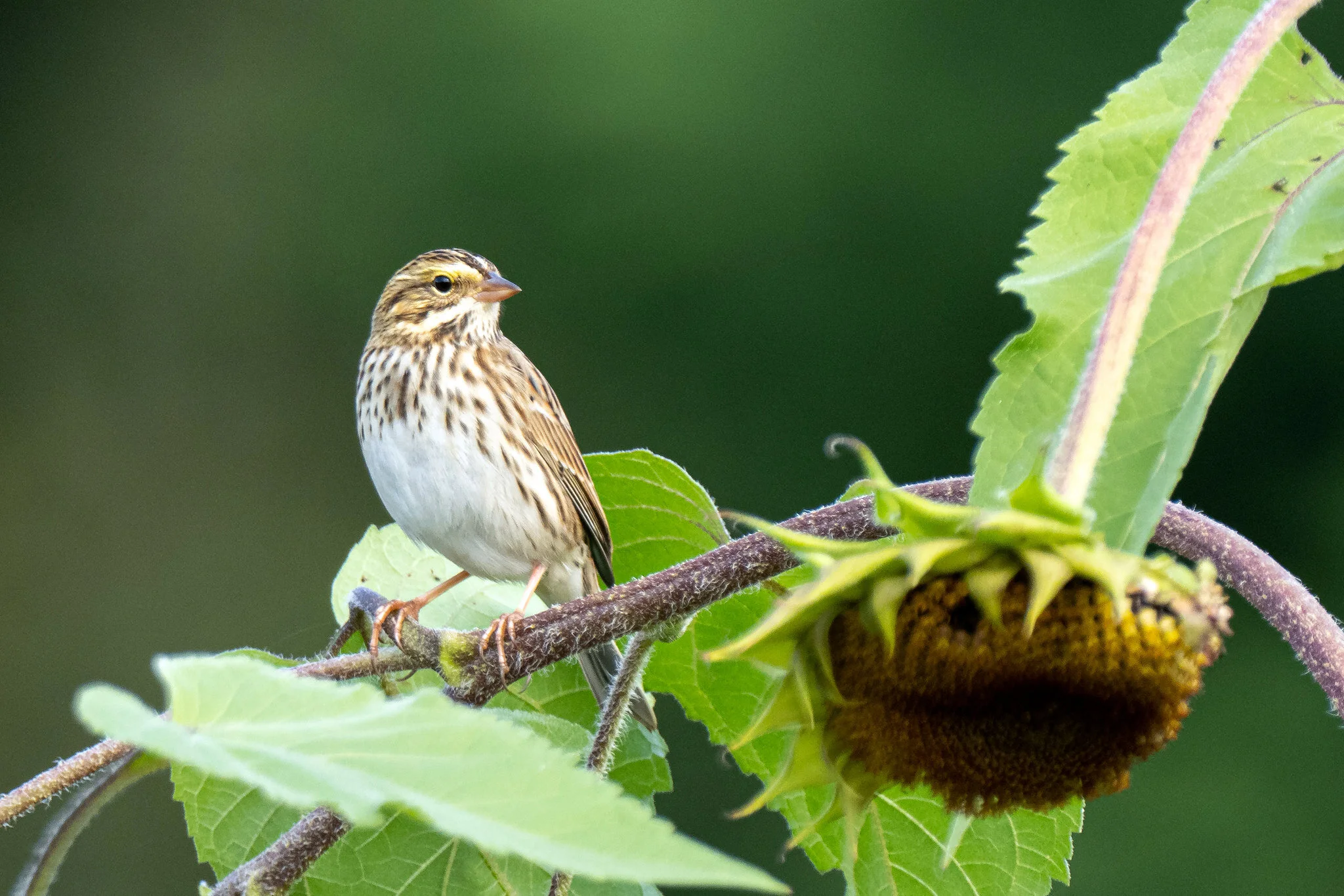By Andy McCormick
Red Winged Blackbird, PC: Mick Thompson
By now most readers will have heard of the study published by the Science Journal in October, which reports a loss of 3 billion birds, resulting in a reduction of 29% since the 1970s level of bird abundance in the United States and Canada. The study, a joint project of the Cornell Lab of Ornithology and the American Bird Conservancy, reports an astounding loss of bird life on our continent. Yet, this study does not even take into consideration the incredible losses of birds before 1970, when the historic levels of birds “darkened the skies” of North America. Even so, the report is daunting. Most shocking in the report is that the expected losses among rare or endangered birds did not make up a significant part of the overall decline. There are not enough rare birds left to have an impact on the overall report and they were left out of the analysis. The bulk of losses are among the most common birds, the very birds we see as the most adaptable and likely to survive. It is unnerving to think that the overall habitat of North America may be changing enough that it is less able to sustain our long-standing common birds.
ALTERNATIVE LOOK AT THE DATA
An alternative analysis of the same data was posted in Dynamic Ecology and examined the top 10 bird species with the greatest decline. This analysis determined that ten species contribute about half of the overall decline in the birds. Two of the ten are invasive species: European Starling and House Sparrow. Ecologists have been trying to reduce these populations with little success, and their decline may be considered positive if it did not indicate a larger problem for birds. Three other species: Blackpoll Warbler, White-throated Sparrow, and Dark-eyed Junco often breed in edge habitats and these may be declining due to human actions. However, they are so common that little research has been done to see why they are declining, and even in decline they are maintaining good numbers. Four other species: Red-winged Blackbird, Savannah Sparrow, Horned Lark, and Common Grackle all saw large range expansions in the past when European settlers cleared more than 90% of forest land in the eastern United States, and now that forests are reclaiming those lands, Dynamic Ecology suggests that these species may be retracting to pre-European contact levels, and thus may be less concerning. The tenth bird, the Pine Siskin is an irruptive species and Dynamic Ecology posits that it can be difficult to assess long term changes in that population.
SHOCKING CONFIRMATION
The Dynamic Ecology analysis may be helpful in putting the sensational headline in perspective, but it remains true that the other half of the estimated loss of birds is accounted for by many other bird species. Many long-time birders are aware that there are fewer birds today and are not surprised that a report like this has appeared. Nevertheless, the report is still a shocking confirmation of what many of us have experienced over our lives as birders. To put this latest report into perspective, I conducted a computer search for “birds in decline” and pulled up hundreds of studies. Reports of Common Birds in Decline (Audubon, 2007), Decline of Eastern Songbirds (1988), Losses Among Sparrows (Down to Earth, 2015), Losses in the Quail Population (Texas Quail Initiative, 2005), Decline of the Corn Bunting (British Birds, 1994), and Species Declining in the Willamette Valley (Oregon Birds, c. 2007) are a few of the studies. Two recent studies stood out.The State of the World’s Birds five-year report published in 2018 by BirdLife International documented declines in 40% of the world’s birds. The study documented that globally 1,469 bird species are threatened with extinction. Pesticide use worldwide was considered a primary cause of the decline. A study published by the French National Center for Scientific Research (CNRS) in 2018 reported “catastrophic” losses among farmland birds with 33% losses over the previous 17 years. Common farm birds including skylarks, grey partridge, blackbirds, linnets, and meadow pipits are in serious decline. That study also posited the increased use of pesticides as a principle cause of the collapse.
Savannah Sparrow, PC: Mick Thompson
SOME BIRDS ARE DOING BETTER
Recent experience shows us that humans can intervene to help birds recover. The tremendous rebound of the Bald Eagle, Peregrine Falcon, and Brown Pelican after the banning of DDT is testament that we can help birds survive. Recent reports from Michigan have Kirtland’s Warbler rebounding as trees have been planted to produce their favored habitat. The Center for Biological Diversity reports on its web site that Piping Plover, Wood Stork, and Whooping Crane are all in recovery due to intervention under the Endangered Species Act. Several endangered Hawaiian bird species have stabilized their populations thanks to human intervention to control predators. And, at great expense, the California Condor has so far been saved from extinction.
WE KNOW WHAT WE NEED TO DO: PRESERVE, RESTORE, AND EXPAND BIRD HABITAT
Birders, hunters, wildlife lovers, ecologists, and wildlife managers have been saying for decades that we cannot continue to destroy natural habitats and expect to keep wildlife in any appreciable numbers. We have organizations like Audubon, American Bird Conservancy, BirdLife International, the American Birding Association, Western Field Ornithologists, Sierra Club, and millions of people who love birds to use in the effort to save birds and their habitat. The Cornell-ABC study is a reminder of our mission and can help us intensify our efforts. Our mission has not changed as a result of this study, but it can lead to better action. Our mission stays the same regardless of who holds a political office, and our political leaders need to hear from us. Together we are better, and we can be the change we want to see to protect the Earth and its wild creatures.




